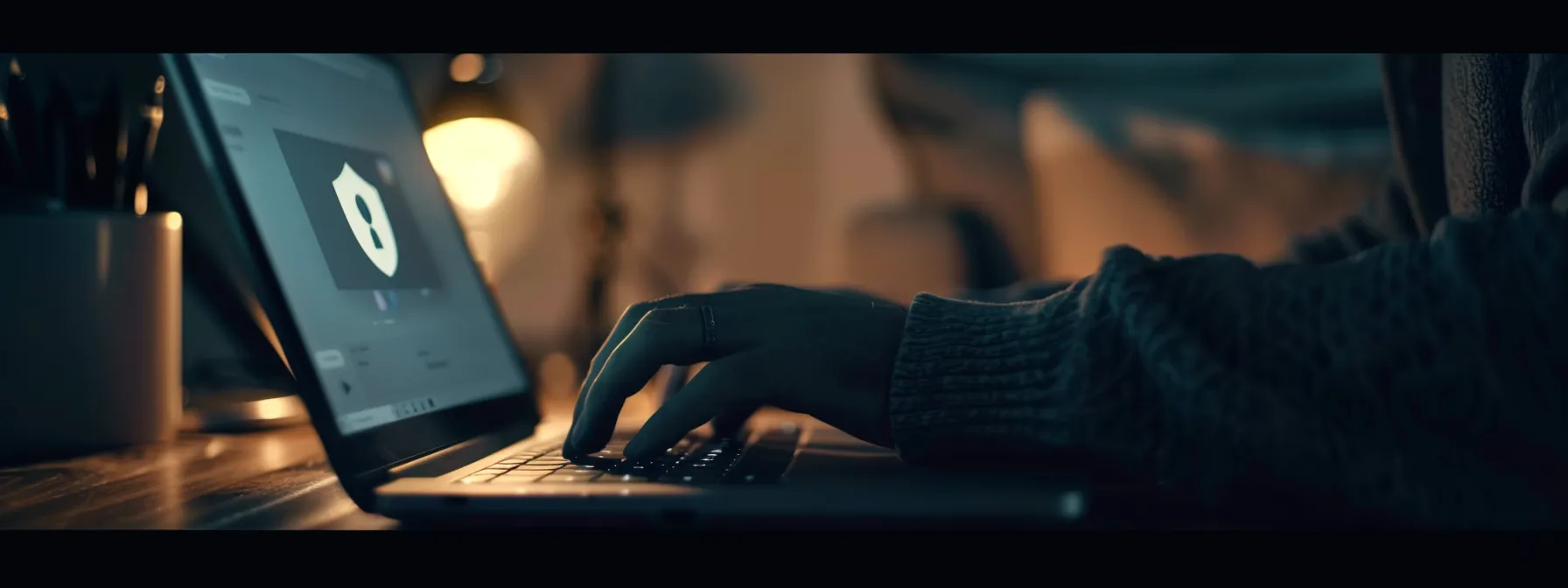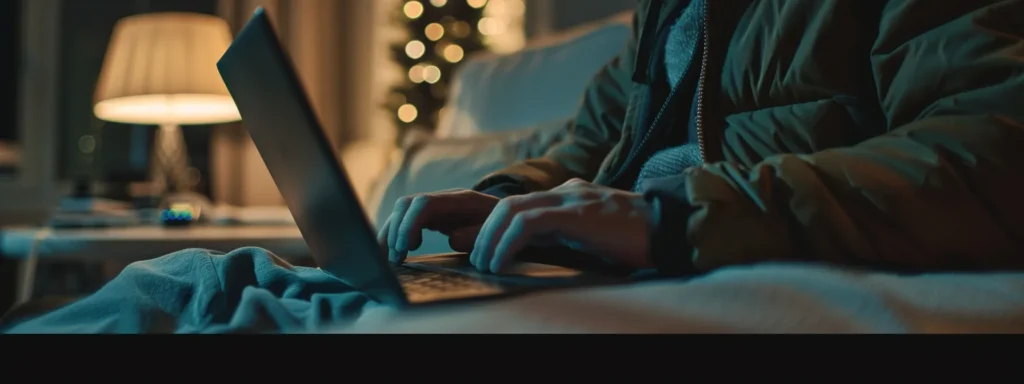Table of Contents
You’re browsing the web, feeling secure behind your virtual private network. But your web browser might be betraying you through WebRTC, an API that can leak your real IP address. This vulnerability affects millions of users, potentially exposing their true location and identity. In this article, you’ll discover how WebRTC Leak Shield acts as your digital bodyguard, protecting your online privacy. Keep reading to learn how this powerful tool can safeguard your IP address and maintain your anonymity on the internet.
Key Takeaways
- WebRTC can expose your real IP address even when using a VPN
- Browser extensions like WebRTC Leak Shield can protect against IP leaks
- Regular testing is crucial to ensure your WebRTC protection is working effectively
- Combining WebRTC protection with other privacy tools enhances overall online security
- Staying updated on WebRTC vulnerabilities and shield updates is essential for ongoing protection
Understanding WebRTC and Its Impact on Your Privacy

You’re browsing the internet, feeling secure behind your proxy server. But there’s a hidden vulnerability you might not know about: WebRTC. This seemingly innocuous technology, built into browsers like Firefox and even some mobile apps, can betray your real IP address. WebRTC bypasses your usual protections, potentially exposing your location and identity. Understanding how it works and when it might leak your information is crucial. You need to know the common scenarios where WebRTC can compromise your privacy and why safeguarding your IP address is more important than ever in our hyper-connected world.
What Is WebRTC and How Does It Work?
You’ve likely used WebRTC without realizing it. This technology enables real-time communication directly between browsers, powering features like video calls and file sharing. WebRTC works across platforms, from Safari on iOS to Chrome on Android, but it can expose your true IP address even when you’re using a VPN. To protect yourself, you might consider a browser extension that blocks WebRTC leaks:
Common Scenarios Where WebRTC Can Leak Your IP Address
You’re most vulnerable to WebRTC leaks when using video chat applications or peer-to-peer file sharing services. These scenarios rely heavily on STUN servers to establish direct connections, potentially exposing your real IP address. Even seemingly innocuous actions like visiting a website with embedded WebRTC functionality can trigger a leak. Microsoft Edge and other browsers may request your IP from a STUN server without your knowledge, bypassing your VPN and revealing your true location through the Domain Name System. Be cautious when clicking on URLs or allowing websites to access your camera and microphone, as these actions often initiate WebRTC connections:
- Video conferencing platforms
- Online gaming services
- Browser-based file transfer tools
- Websites with live chat features
- Web-based cryptocurrency mining
The Importance of Safeguarding Your IP Address
Your IP address is your digital fingerprint, revealing your location and potentially your identity. With WebRTC’s vulnerability, you must shield this data from prying eyes. Disable WebRTC in your browser’s menu bar or use a trusted VPN to cloak your real IP. Remember, even a single javascript snippet can exploit this weakness, jeopardizing your privacy. Stay vigilant, for in the digital realm, your IP is both your shield and your Achilles’ heel.
You’re now aware of WebRTC’s potential privacy risks. Let’s explore how WebRTC Leak Shield can safeguard your online identity.
How WebRTC Leak Shield Protects Your Online Identity

You’re not just another IP address in the vast digital ocean. With WebRTC Leak Shield, you take control of your online identity. This powerful tool, available for browsers like Opera and Brave, acts as your digital bodyguard. It blocks the sneaky WebRTC requests that can expose your real IP, even when you’re using a VPN like ExpressVPN. You’ll discover how this shield works, its key privacy-enhancing features, and how to activate it in your browser’s privacy settings. No more worrying about accidental data leaks during video calls or P2P file transfers. It’s time to download your digital armor and step into a world where your online movements are truly your own.
The Basics of WebRTC Leak Shield Functionality
You can prevent WebRTC leaks with a simple tool. WebRTC Leak Shield blocks the vulnerable connections that expose your real IP. You’ll find this feature in the latest version of many VPN services, often tucked away in the settings menu.
- Install a WebRTC Leak Shield extension
- Enable protection in your VPN’s settings
- Verify shield effectiveness with online leak tests
- Stay vigilant for new vulnerabilities
Key Features of WebRTC Leak Shield That Enhance Privacy
You’ll find WebRTC Leak Shield technology brimming with features to fortify your online privacy. This shield, available on the Chrome Web Store for Chromium-based browsers, goes beyond simple IP masking. It employs advanced techniques to neutralize potential leaks, much like uBlock Origin’s WebRTC blocking capabilities. You’ll appreciate how it seamlessly integrates with your browser, working tirelessly in the background to keep your true identity under wraps.
Step-by-Step Guide to Activating WebRTC Leak Shield
You’ll find activating WebRTC Leak Shield a straightforward process. Open your browser’s settings, navigate to the privacy tab, and look for the WebRTC option. Click the button to enable protection, shielding your real IP from prying eyes. If you’re using a private network solution like NordVPN, check their app for built-in WebRTC leak protection and toggle it on for an extra layer of security.
Ready to take control of your online privacy? Let’s dive into the simple steps to set up WebRTC Leak Shield and fortify your digital identity.
Setting Up WebRTC Leak Shield for Beginners

You’re about to take control of your digital privacy. Setting up WebRTC Leak Shield isn’t just about installing software; it’s about fortifying your entire operating system against DNS leaks. You’ll prep your browser, navigate the app store, and verify your shield’s effectiveness. This isn’t just another password-protected tool – it’s your personal firewall against the prying eyes of the digital world. Remember, in this age of mass surveillance, your IP address is a beacon. Let’s extinguish it together.
Preparing Your Browser for WebRTC Leak Shield Installation
You must fortify your browser before installing WebRTC Leak Shield to ensure maximum digital privacy. Clear your cache and cookies, then update your browser to the latest version. Check your browser’s html elements for any hidden scripts that might compromise your security:
Detailed Installation Process for WebRTC Leak Shield
You’re about to secure your digital footprint with WebRTC Leak Shield. Download the extension from your browser’s app store, ensuring you choose the official version. Once installed, you’ll see a shield icon in your toolbar. Click it, then toggle the switch to activate protection. For added security, dive into the extension’s settings and customize its behavior to match your privacy needs:
- Enable “Block all non-proxied UDP”
- Set “WebRTC IP handling policy” to “Disable non-proxied UDP”
- Activate “Prevent WebRTC from using routes other than the default route”
- Choose “Use your proxy server (if any) for all peer connections”
Verifying the Successful Setup of WebRTC Leak Shield
You’ve installed WebRTC Leak Shield, but how can you be sure it’s working? Test your setup using specialized websites that check for WebRTC leaks. Visit these sites with your shield active and verify that your real IP remains hidden. If you see only your VPN’s IP or no IP at all, you’ve successfully fortified your digital perimeter. Don’t stop at one test; try multiple services to ensure comprehensive protection:
- BrowserLeaks.com WebRTC test
- ipleak.net
- WebRTC Leak Test Tool by ExpressVPN
- Perfect Privacy WebRTC Leak Test
Remember, vigilance is key in the digital realm. Regularly re-check your shield’s effectiveness, especially after browser updates or changes to your network configuration. Your IP address is a valuable asset in the wrong hands; guard it relentlessly.
Congratulations on setting up your WebRTC Leak Shield! Now, let’s supercharge your privacy protection with some advanced techniques.
Advanced Tips for Maximizing WebRTC Leak Shield Efficiency

You’ve taken the first step in safeguarding your digital identity, but true security demands more than basic protection. To maximize your WebRTC Leak Shield’s effectiveness, you’ll need to dive deeper into its settings, troubleshoot potential weak points, and integrate it with other privacy tools. This isn’t just about flipping switches; it’s about understanding the intricate web of connections your device makes and fortifying each potential vulnerability. Remember, in the digital realm, your security is only as strong as its weakest link. Let’s strengthen every link in your privacy chain.
Customizing Settings for Optimal Protection
You need to fine-tune your WebRTC Leak Shield for maximum protection. Dive into the advanced settings and disable all non-essential WebRTC features. Set your WebRTC IP handling policy to the most restrictive option, usually “Disable non-proxied UDP.” This prevents any accidental IP leaks through WebRTC connections. Remember, every toggle and checkbox is a potential weak point in your digital armor:
Troubleshooting Common Issues With WebRTC Leak Shield
You might encounter issues with your WebRTC Leak Shield, but don’t panic. Check if your browser is up-to-date and if the shield is properly enabled in your settings. If you’re still experiencing leaks, try clearing your browser cache and cookies, then restart your browser. Remember, some websites might intentionally bypass WebRTC protections, so always verify your IP address isn’t leaking on crucial sites:
Combining WebRTC Leak Shield With Other Privacy Tools
You must layer your defenses to truly secure your digital identity. Pair your WebRTC Leak Shield with a robust VPN service, ensuring all your traffic is encrypted and routed through secure servers. Add a firewall to control incoming and outgoing connections, and use a secure DNS resolver to prevent DNS leaks. This multi-tool approach creates a formidable barrier against prying eyes:
WebRTC Leak Shield goes beyond basic protection. Let’s explore how it can transform your online experience in real-world scenarios.
Real-World Benefits of Using WebRTC Leak Shield

You’ve taken the leap to protect your digital footprint with WebRTC Leak Shield, but what tangible benefits can you expect? This isn’t just about abstract privacy concepts – it’s about real-world protection that impacts your daily online life. From securing your sensitive communications to preventing targeted ads based on your location, WebRTC Leak Shield acts as your personal digital guardian. Users worldwide have reported feeling a newfound sense of security and control over their online presence. Let’s explore how this tool enhances your browsing experience, safeguards your communications, and makes a noticeable difference in your digital life.
Enhancing Your Browsing Security With WebRTC Leak Shield
You shield yourself from prying eyes when you activate WebRTC Leak Shield. This tool blocks the hidden channels that could expose your true IP address, even when you’re using a VPN. By closing these digital loopholes, you maintain control over who sees your online footprint and where they think you’re located.
WebRTC Leak Shield’s Role in Safe Online Communications
You shield your conversations from eavesdroppers when you use WebRTC Leak Shield. This tool prevents your real IP address from leaking during video calls, voice chats, and file transfers, ensuring your location remains hidden. You’ll communicate with confidence, knowing that your digital interactions are truly private and secure.
Feedback From Users: How WebRTC Leak Shield Made a Difference
You’ve heard the testimonials, and now you know the truth. Users worldwide report a newfound sense of digital liberation after adopting WebRTC Leak Shield. They speak of browsing without fear, conducting business across borders without revealing their true location, and finally feeling in control of their online presence. This isn’t just software; it’s a digital safeguard that’s changing how people interact with the internet.
Secure your online identity with confidence. Let’s address some common questions about WebRTC Leak Shield.
Frequently Asked Questions About WebRTC Leak Shield

You’re right to question the intricacies of WebRTC Leak Shield. As you navigate the digital landscape, understanding this tool is crucial for maintaining your online anonymity. Let’s address the burning questions you likely have about its functionality, system requirements, and future support. Remember, in the world of digital privacy, knowledge is your strongest defense. By demystifying WebRTC Leak Shield, you’ll be better equipped to protect your real IP address from exposure, ensuring your online activities remain truly private.
Addressing the Most Common Queries Regarding WebRTC Leak Shield
You’ve got questions, and WebRTC Leak Shield has answers. This tool blocks your real IP address from leaking during peer-to-peer connections, even when you’re using a VPN. It works by intercepting and rerouting WebRTC requests through your chosen proxy or VPN server, ensuring your true location remains hidden. Remember, your digital footprint is your own – guard it zealously.
Technical Requirements for Running WebRTC Leak Shield
You’ll find WebRTC Leak Shield compatible with most modern browsers and operating systems. Check your browser’s version to ensure it supports the latest WebRTC protocols. For optimal performance, keep your system updated and allocate sufficient memory for smooth operation:
Future Updates and Support for WebRTC Leak Shield Users
You’ll receive ongoing support and updates for WebRTC Leak Shield, ensuring your digital shield remains impenetrable. The developers constantly monitor for new vulnerabilities and patch them swiftly, keeping you ahead of potential threats. Stay vigilant and keep your shield updated to maintain the highest level of protection:
- Regular security patches
- Feature enhancements based on user feedback
- Compatibility updates for new browser versions
- Improved detection and blocking of emerging WebRTC leak vectors
Frequently Asked Questions
What is WebRTC and how does it affect my online privacy?
WebRTC is a technology that enables real-time communication in web browsers. It can compromise your online privacy by revealing your true IP address, even when using a VPN. This occurs because WebRTC connections often bypass VPN tunnels, potentially exposing your actual location to websites and services.
Can WebRTC leak shield work alongside my VPN?
WebRTC leak shields can work alongside VPNs, enhancing your privacy protection. While a VPN encrypts your traffic, a WebRTC shield specifically prevents your real IP from leaking during browser-based real-time communications. Using both tools together provides a more comprehensive defense against online tracking and identification.
How do I know if WebRTC leak shield is working correctly?
You can check if your WebRTC leak shield is working by visiting specialized testing websites. These sites attempt to detect your real IP address through WebRTC. If the shield is effective, these tests will fail to reveal your actual IP, instead showing your VPN’s IP or no information at all.
Will using WebRTC leak shield slow down my internet connection?
WebRTC leak shields typically have minimal impact on your internet speed. They work by blocking specific connections, not by rerouting all your traffic. You might notice a slight slowdown when first connecting to websites using WebRTC, but overall browsing speed should remain largely unaffected.
Are there any websites that won’t work with WebRTC leak shield enabled?
Some websites relying heavily on real-time communication features may not function properly with WebRTC leak shields enabled. These can include video conferencing platforms, online gaming sites, and certain streaming services. However, most standard websites should work normally, as WebRTC is primarily used for specific interactive features.
Conclusion
WebRTC Leak Shield serves as your digital guardian, protecting your real IP address from exposure during peer-to-peer connections. By blocking vulnerable channels and rerouting WebRTC requests, this tool ensures your true location remains hidden, even when using a VPN. Users worldwide report a newfound sense of online security and control after adopting WebRTC Leak Shield, feeling liberated to browse, communicate, and conduct business without fear of revealing their digital footprint. As the digital landscape evolves, staying vigilant and keeping your WebRTC Leak Shield updated is crucial for maintaining your online anonymity and safeguarding your privacy in an increasingly connected world.
I’m Billy Hernandez, a single dad and seasoned SEO professional with a passion for digital marketing. For over a decade, I’ve been helping businesses enhance their online presence and achieve top rankings on search engines. My journey as a father has taught me the importance of balance, efficiency, and resilience—qualities I bring into my work every day. Whether I’m crafting a new SEO strategy, developing content, or spending quality time with my child, I’m dedicated to growing, learning, and making a difference. Let’s connect and see how we can elevate your business together!



